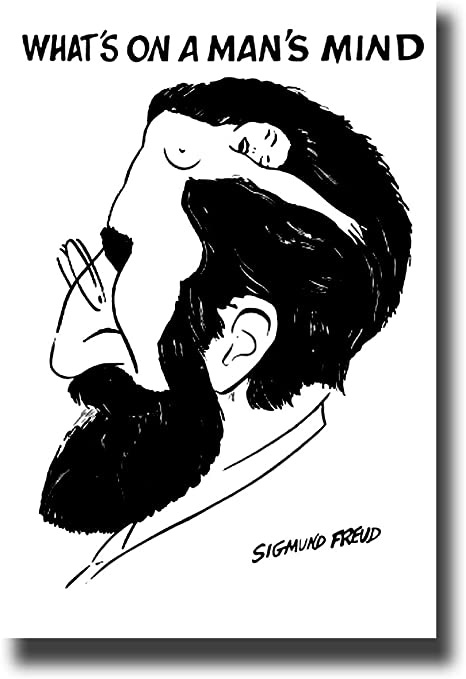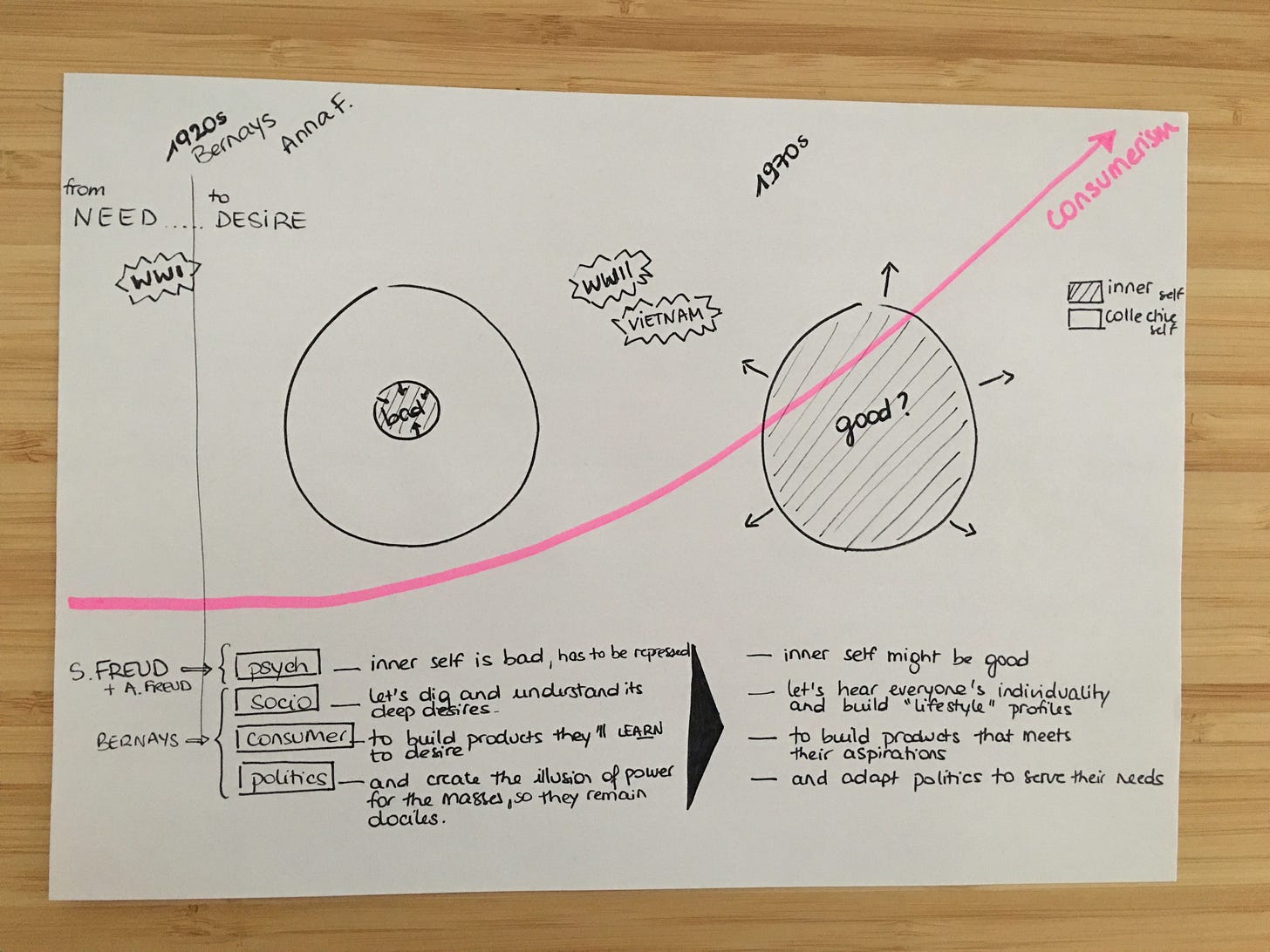#021 ✰ The Self & the Freud mafia
Or their worldwide influence on Consumerism in the 20th century.
Good day to you!
I hope this note finds you well.
As you know, our mission is to help people free themselves from rampant consumerism, so that they can dedicate more time, money and bandwidth to be and build. 👉 We want to be the tool that empowers your future materialistic decisions.
Out
Until recently, the things that came to my mind when thinking about Freud were that… he was the father of the Oedipus complex, or had views on interpreting dreams.
Then, I remember this poster hanging for years in Kev’s student dorm.
Well as you can see, I didn’t know much about him [Freud], nor had I learnt anything at school about the worldwide impact of his extended family across the 20th century. But man, it is worth sharing!
In the excellent documentary by Adam Curtis, The Century of The Self, you are about to screen the past hundred years through the lens of psychoanalysis and consumerism.
I had no idea how big of a role did psychoanalysis play, used by politicians and businesses to shape our society into what it has become today: from need to desire, from masses content to individualities satisfaction.
At the beginning, was Viennese founder of psychoanalysis, Sigmund Freud. He was convinced that individuals are hunted by primitive impulses that have to be dominated and repressed for the greater good of society.
Sigmund’s nephew, Edward Bernays applied these principles to politics and business in America in the 1920s. He is the inventor of Public Relations, and envisioned consumerism as a tool to control masses. Consumerism would be the illusion of power, given to the masses. While an “enlighten despot” should rule.
Bernays published his uncle’s books and tremendously contributed to the popularity of Sigmund Freud and psychoanalysis across America.
His strategy was the following: first, digging and understanding people’s inner desires. Then businesses, with the help of recently created PR and marketing agencies, would feed these desires (no longer needs) with products. Industries would flourish, employment would be stable. Meanwhile though, it was crucial to repress these individuals inner selves into respectful, model citizens and consumers. Shaping a docile crowd, by sending individuals into psychoanalysis sessions.
Sigmund’s daughter, Anna Freud applied these same principles on children with mental trauma. Results weren’t that brilliant, as many examples will tell. But her family was powerful.
WWII, the Cold War, Vietnam,… Bernays’ techniques had gone far in manipulating masses. In the late 60s, a fierce opposition started, inspired by Herbert Marcuse or Wilhelm Reich (the latter was a disciple of Freud except he disagreed on one basic: for him, human was good on the inside and needed to unleash its inner self, especially sexual. Freud’s family didn’t quite like it. He was diagnosed ‘mad’, imprisoned and died there. End of the story.) This movement started among left-wing students and got seriously repressed. But soon, retreats to explore your true inner self started to blossom, in California and then across the country. It was the rise of new, (sexually liberated), autonomous beings.
No longer consumerists, then? If most rejected the idea of being told what to buy, still they were looking for ways to express their singularities. Technological progress (computers) helped factories adapt to the individuality-based demand: there are unlimited desires out there, that will never be satisfied, let’s fill them!
And consumerism flourished.
I tried to summarize four hours of rich explanations into a drawing, because I am definitely a visual person and I love this exercice. This is my way to remember things.
If you want more crispy stories about how Bernays used his understanding of inner desires to make women-smoking a movement, how his techniques influenced Goebbels and the nazis, or how he deliberately used fake news to defend US businesses being kicked out of Guatemala, watch the documentary.
I’d be curious to hear your take-homes, that will probably differ from mine!
What’s new in the app 📱
Have you ever wanted to digitalize your physical library? Like, you know, to make sure you don’t buy twice the same book, to annotate who lent you that book, or just to make sure a great book doesn’t get piled up somewhere without being read?
today we’re excited to release a new method to facilitate this! Starting tonight [Paris time] you’ll be able to scan the ISBN barcode and save tremendous amount of time filling the related information about each book.
If you were thinking of getting started with your books, today’s the day! If you don’t have the beta yet, just sign up => here !
Have a beautiful day! 🍍
Mathilde







